Search

Publications
Zangezur Corridor: improving the transportation network in the region of high-potential economic development

Early in June, the 12th meeting of the trilateral Work Group chaired jointly by Shahin Mustafaev, Deputy Prime Minister of Azerbaijan, Mger Grigoryan, Vice Prime Minister of Armenia, and Alexei Overchuk, Vice Prime Minister of Russia, took place in Moscow. This event went on for 9 hours, and its outcomes presented significant progress in coordinating specific measures targeted at reinstatement and organization of railway transportation along the section of the former Transcaucasian Railway Yeraskh (Armenia) Ц Julfa (Nakhchivan Autonomous Republic Ц NAR, Azerbaijan) Ц Megri (Armenia) Ц Horadiz (Azerbaijan).
The Group negotiated the details of the modality of border crossings between Azerbaijan and Armenia: passport control, customs control and border control in the process of traffic.
Hence, the process of coordination along the entire Zangezur Corridor and Nakhchivan railway hub is entering its final stage.
The Caspian Institute of Strategic Studies already analyzed the effect of ITC interface in this region and the details of Zangezur Corridor construction roadmap. [1] In this article we will talk more about the macroeconomic effects and the potential of the above-listed route, which clear as of mid-2023.
If we take off the table the difficulties of political coordination between Yerevan and Baku inherited from the 30-year Karabakh conflict, as well as different political concerns on behalf of Teheran, Zangezur Corridor in essence turns out to be an element in the system of inter-complementary macroeconomic interests of Russia, Azerbaijan, Turkey, Armenia, and Iran.
In this project, every country can find its own commercial and resource-related advantages. It should be noted, that Russia can define this project as a part of transportation and industrial network targeting Armenia, Azerbaijan, Iran and later Ц as an additional land-based through-passage to Turkey. It will be very important in the context of the other two critical railway routes of the South Caucasus: Baku - Tbilisi - Kars and Astara - Rasht (currently under construction), providing for access to the Mediterranean and the Persian Gulf ports for Russian foreign economic activities.
RussiaТs approach
For Russia it may be simultaneously viewed as an element of macro-regional trunk infrastructure, and as a fragment of a network of industrial parks and agrarian centers extending from the mid-Volga Region and the Black Sea coastal area to the Persian Gulf countries. Within such project vision, Azerbaijanian, Armenian, Turkish and Iranian industrial and agrarian centers should receive a pretty sustainable network of overland lines of communications for various modes of transport.
From this standpoint, Zangezur Corridor does not look like just «an additional route» connecting the lines of East-West and North-South corridors, but like a planned step towards improving the transportation network in the region of high-potential economic development. In this aspect it becomes clear that the industrial centers in the new economic regions and Nakhchivan Autonomous Republic will become the field support base for the Corridor development.
One of the important steps within this strategy is a joint project of Tatarstan and Azerbaijan in Jabrail District Ц the industrial park Araz Valley Economic Zone. Auto Leasing Azerbaijan JV established by PJSC KAMAZ and Ganja Auto Plant will be the biggest servicing center for freight motor transport in the territory of the new economic regions and alongside the Zangezur Corridor routes.
The Center is designed to service more than 1.5 thousands of trucks and farming machinery per year, it will be performing as a hub for repairing trucks and farming vehicles not only in this region of Azerbaijan, but also in Nakhchivan Autonomous Republic and in Iran thanks to railway connection.
This is just one example of applying this strategy for connecting the industrial zones by a trunk infrastructure network.
Interests of Azerbaijan
For Azerbaijan, Zangezur Corridor is becoming one of the leading projects for developing the economic complex and for new approaches to territorial and economic planning. The communication lines within the Corridor scale up the industrial zones combining Mingyachevir Industrial Park, Pirallakh Industrial Park, Garadag Industrial Park, Sumgait plants in the East, agrarian parks in the central part and agrarian companies in Nakhchivan Autonomous Republic.
Lateral road M6 Hajigabul Ц Horadiz Ц Agbend Ц Zangezur Corridor will be the key route for connecting these agrarian and food industry centers. It will connect Fizuli, Khojavend, Khojaly and Shusha Districts and will have side branches going inside those districts, in particular Ц the road Ahmedbeily Ц Fizuli Ц Shusha.
Among other things, Zangezur project opens new infrastructural possibilities for Azerbaijan to implement the oil-based growth model oriented towards private sector and external investment support with the state as the main driver.
On top of that, Zangezur Corridor is the region with redundant energy generation. The construction of 9 mini hydropower plants (Karabakh and Eastern Zangezur) of total 76.8 MW capacity is to commence before the end of 2023. Currently, 7 mini GPPs with total 70.5 MW capacity are under construction.
For the future development purposes, the Energy Ministry of Azerbaijan signed the MOU with French TotalEnergies for cooperation in assessing the project of building a 250 MW solar power plant and 250 MW wind power plant. The MOU also stipulates for cooperation in the sphere of assessing energy efficiency projects. These projects are to be implemented in Nakhchivan and Eastern Zangezur.
The MOU with Nobel Energy Management was signed in June stipulating for cooperation in building 400 MW solar power plant in Nakhchivan. The project stipulates for exporting energy to Turkey.
There is a direct correlation between the pace of commissioning new energy capacities and the economic growth rate in Azerbaijan. We are talking here about night-time lighting of motorways, electrification of Zangezur railway, developing greenhouse cultivation requiring a lot of energy, forming the industrial cluster in the Araz River valley, the announced construction of 50 plants in Lachin District, energy supplies to Shusha and dozens of future settlements Ц these are only some projects depending on new energy generation capacities.
Scaling up the project
If we take a high-level view, Zangezur Corridor is one of the examples of combining the interests of Turkey, Russia and Iran. In particular, for Turkey it became a prestigious project of the Turkic belt integration via multi-lateral agreements about trade preferences between two and three countries (in particular, the agreement between Turkmenistan, Azerbaijan and Turkey on commercial and economic cooperation dated 14 December 2022).
Trunk communication lines, such as Zangezur Project, constitute the backbone for interaction of regional economies around the existing and new development centers, which are currently riding on the wave of globalization fragmentation. We are talking here about the development belts between Turkey and China, as well as between Russia, Iran and India, including regional nucleuses in Kazakhstan, Uzbekistan and Turkmenistan.
Division of functions is the key feature of interaction of counterparties around the Corridor.
Russia is responsible for administrative and political coordination, mainly using such tool as tri-lateral Commission of Vice Prime Ministers of Russia, Azerbaijan and Armenia. Then Russian Railways will assume the load of financing and building a 43-km section of the railway across the territory of Meghri District of Armenia (Zangezur). Azerbaijan may assume part of the financing, so far this topic of the agenda has not been negotiated yet.
Azerbaijan is financing and building (with active participation of the Turkish contractors) the longest section of the railway across the territory of Azerbaijan: 166 km of the new railway from Horadiz to the Armenian border, then across Nakhchivan Autonomous Republic (NAR) to Ordubad, and simultaneously with that 158 km of the railway across NAR is being upgraded (from Ordubad to Velidag) plus 14 km to the northern border of NAR with Armenia.
Russia confirmed the importance of Zangezur Corridor for communication between Azerbaijan and Armenia by including it into the text of the Tri-lateral Statement dated 9 November 2020 signed by Vladimir Putin, Ilham Aliyev and Nikol Pashinyan.
The railway freight transit through Azerbaijan to Armenia is also possible via Gazakh District of Azerbaijan using the crossing between Barkhudarli (Azerbaijan) and Ijevan (Armenia) in the northern section of Armenia-Azerbaijan border. This option would entail fewer political issues. However, this section does not provide for the required macro-economic effect compared to the southern connecting route to Nakhchivan Autonomous Republic.
Zangezur Corridor is the zone of positive interference of North-South and East-West transportation and industrial strategies. It combines both freight traffic flows integrating two vectors of foreign trade activities being extremely important for Russia globally Ц to Turkey and to Iran.
The Agreement between Baku and Teheran on construction of the alternate route for the Corridor confirms the importance of Zangezur option. It stipulates for building the alternate road in the territory of Iran should there be any barriers for developing the trunk infrastructure in the territory of Armenia. In March 2022, the two countries the MOU was signed stipulating for building (in addition to the railway connecting Eastern Zangezur and Nakhchivan) a multilane highway, power transmission lines, digital and other communication lines.
The consultations between President Aliyev and Igor Levitin, the aid to the RF President on transportation issues, are now going on a regular basis, and the topic of expanding the North-South Corridor capabilities is discussed as part of «one package» with Zangezur Corridor.
Briefly summarizing the situation around Zangezur Corridor, we can highlight the following:
- This Corridor may be commissioned faster than Rasht Ц Astara section (work in Azerbaijan may be completed in the summer of 2024). If we take into account that Russian Railways will complete the work in the territory of Meghri area of Armenia by autumn of 2025, then Russia will get access to Bandar Abbas port one and half or even two years earlier then via the railway hub in Rasht. The total costs of Russian Railways and a group of potential contracts may amount to USD 200 mln, which is noticeably less than investment into Iranian railway. Even though, upgrade of the railway in Iran may be required;
- During the preceding year, Armenia has doubled its export to Russia (by 183%), in January-April of 2023, the commodity turnover grew by 96%. With direct railway connection, the process of economic interaction between Armenia and Russia will proceed even faster;
- In future, the Russian Federation will have a second railway access to Turkey (in addition to BTK) if the traffic Gumri Ц Kars is resumed. The direct outcome will be in political rapprochement of Armenia and Turkey, which is in the interests of Moscow;
- Zangezur Corridor will contribute to the expansion of the network of railways and motorways connecting Russia and Iran: addition to the two Caspian section of the North-west ITC, transshipment in sea ports and connections with the railway network in Iran. Different types of cargos may be distributed here, and the possibility of growing the traffic from 5 to 8 mtpa will be added at the first stage of the project.
1. Railway Baku Ц Tbilisi Ц Kars and Zangezur corridor: interest of Russia towards new trunk communication lines in the South Caucasus. Caspian Institute for Strategic Studies, 02.12.2022. https://caspian.institute/product/karavaev-aleksandr/zheleznaya-doroga-baku-tbilisi-kars-i-zangezurskij-koridor-interesy-rossii-v-novyh-magistralnyh-kommunikaciyah-yuzhnogo-kavkaza-38394.shtml







